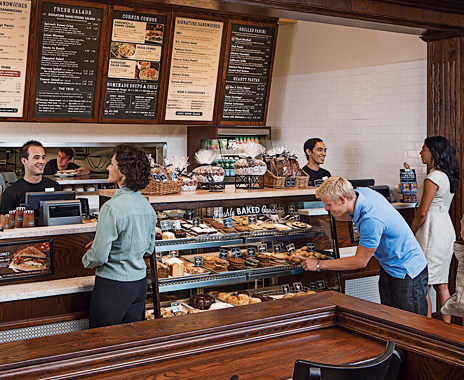The impulse buy is most often associated with tossing an unplanned pack of gum or granola bar into your basket as you idly wait in line at the supermarket or convenience store. But limited-service restaurants can also benefit from this potential incremental revenue source with strategically positioned on-brand products to sate consumers’ impulses at just the right moment.
More than half (58 percent) of trips to limited-service restaurants are impulsive in nature to begin with, according to research by Wrigley Foodservice.
In the restaurant realm, impulse buys can—and should—come in many guises, depending on the concept. One small, low-effort way to boost incremental sales is to stock consumer packaged goods (CPG) like mints, candy, or gum at the checkout—a tactic that more than half of consumers say would enhance their overall restaurant experience, according to online and in-market surveys of more than 20,000 customers by Wrigley.
“Our items [such as Orbit gum and Skittle packs] are very impulse-driven around two basic needs: freshening and a bit of a treat,” says Matt Bireley, director of business development and new transactions at Wrigley Foodservice. “These types of impulse buys can increase check averages without anyone having to cook or prep for them. And as we know, restaurants are experiencing pressures in cost, especially around labor, so this is a really easy form of incremental revenue.”
Two natural fits in limited service that are underutilizing CPG impulse buys are coffeeshops and sandwich chains, Bireley says. But he acknowledges it’s not for everyone. Despite the 10 percent average check boost that comes from a 69-cent pack of gum, some sandwich chains balk at the idea of selling packaged candy and snacks at checkout, as it gives the appearance they’re a convenience store.
Dallas-based Corner Bakery Café doesn’t carry any branded CPGs at checkout. Impulse buys are, however, baked into its DNA, as the chain has offered house-baked items in the display case and pre-packaged since it was founded in 1995.
“We’re one of those ideal types of restaurants for impulse buys, where we’re really set up for people to be buying with their eyes first,” says Ric Scicchitano, executive vice president of food and supply chain. It’s hard to ignore the massive glass bakery cases bursting with a dozen-odd breads, cakes, and pastries upon walking through the door.
“We started as kind of a giant bakery display 25 years ago, and our measure for success was if people stopped and went, ‘Wow, look at all this food in front of us!’” Scicchitano says. “Fast-forward to now, it’s about managing the check, value, and spend, which adds that extra wrinkle of how you get that extra dollar for a cookie or wrapped cake.”
The answer, he says, is in the packaging. The chain’s signature coffee cake is tied up in cellophane, ready to be presented as a gift. Iced chocolate Bundt cakes “glisten” inside their windowed boxes. With the treats positioned within arm’s reach on each side of the register, the consumer can easily grab the items with one hand while placing his or her order.
“Good-looking food sells, and good food packaged the right way, especially when intended to go, is a winner,” Scicchitano says.
Excluding the breakfast daypart, about half of Corner Bakery customers add on a baked item to their meal, which increases noticeably on carryout buys, Scicchitano says. Moreover, a whopping 80 percent of upselling on baked goods occurs without any suggestive selling from cashiers.
Correctly positioned displays can do most of the talking for CPG impulse buys, too, since these are the kinds of products cashiers might not feel comfortable hard-selling the consumer on, Bireley says. Placing them at the checkout instead of where orders are taken boosts the chance of an instinctual add-on because consumers are more impulsive at the end of a transaction.
Suggestive selling is a major part of the impulse-driven business model at Philly Pretzel Factory, where the average check runs $5.75 even though the cost of its core product—a soft pretzel—is just $1. About half of sales come from suggestive selling, whether that’s upselling the customer on more pretzels for a better value (three for $2 or 10 for $5) or adding a bottled beverage, mustard, or sweet dip from the racks placed above the display case.
“It’s all based on pricing and ability at point of sale to make sure the customer is making the best value decision,” says president Marty Ferrill.
Because the pretzels and pretzel sandwiches are pre-made, the speed of an average transaction lends itself to a few additional questions, like, “Do you want a dip or drink with that?”
“The service time is still quick, so we’re not asking too many questions or taking up too much time to where they’re feeling the noise,” Ferrill says. “It’s a fine balance.”
>As such, the chain heavily emphasizes the notion of “completing the sale” in training, which gets employees in the mindset that asking helps the customer get the most out of their experience. Ferrill says new employees might be reluctant to upsell when in fact they should be completing the sale.












